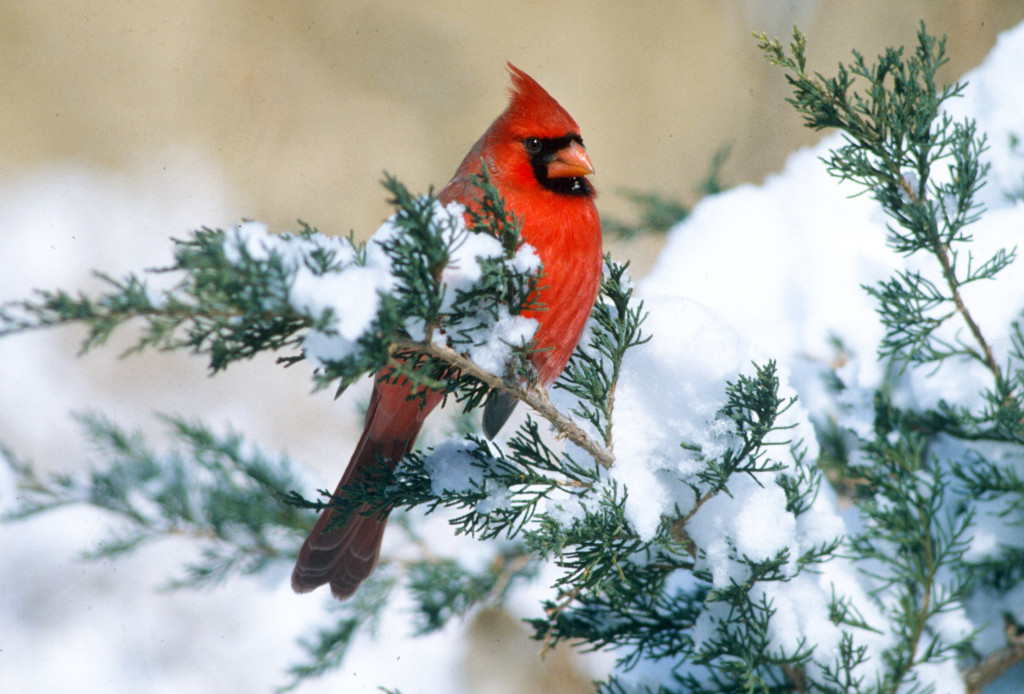
By Monica Macoubrie, Wildlife Education Specialist
As the winds of winter sweep across Nebraska and the trees stand with bare branches stretching across the pale sky, it’s a quiet, contemplative time — that is, until a vibrant flash of red, a cheerful chirp or a flurry of wings breaks the seeming barrenness of the season. Winter birds are here to remind us that even in the coldest months, life thrives in the Heartland. Keep an eye out for these remarkable feathered friends.
Northern Cardinal
Few sights are as iconic in winter as the brilliant red of a male cardinal perched on a snow-covered branch. Against the backdrop of frosty trees and white snow, the male’s striking plumage stands out as a vivid splash of color that seems to defy the dreariness of winter. Meanwhile, the female cardinal, though subtler in her beauty, captivates with her elegant hues of warm brown and soft red. Together, they create a stunning contrast in the cold landscape, embodying the quiet grace of Nebraska’s winter wildlife.
Cardinals are year-round residents in the state, making their cheerful presence known even during the coldest days. Their distinctive, clear whistles—often heard before they are seen—pierce the silence of a snow-covered morning, seeming to offer human listeners a melody of hope.
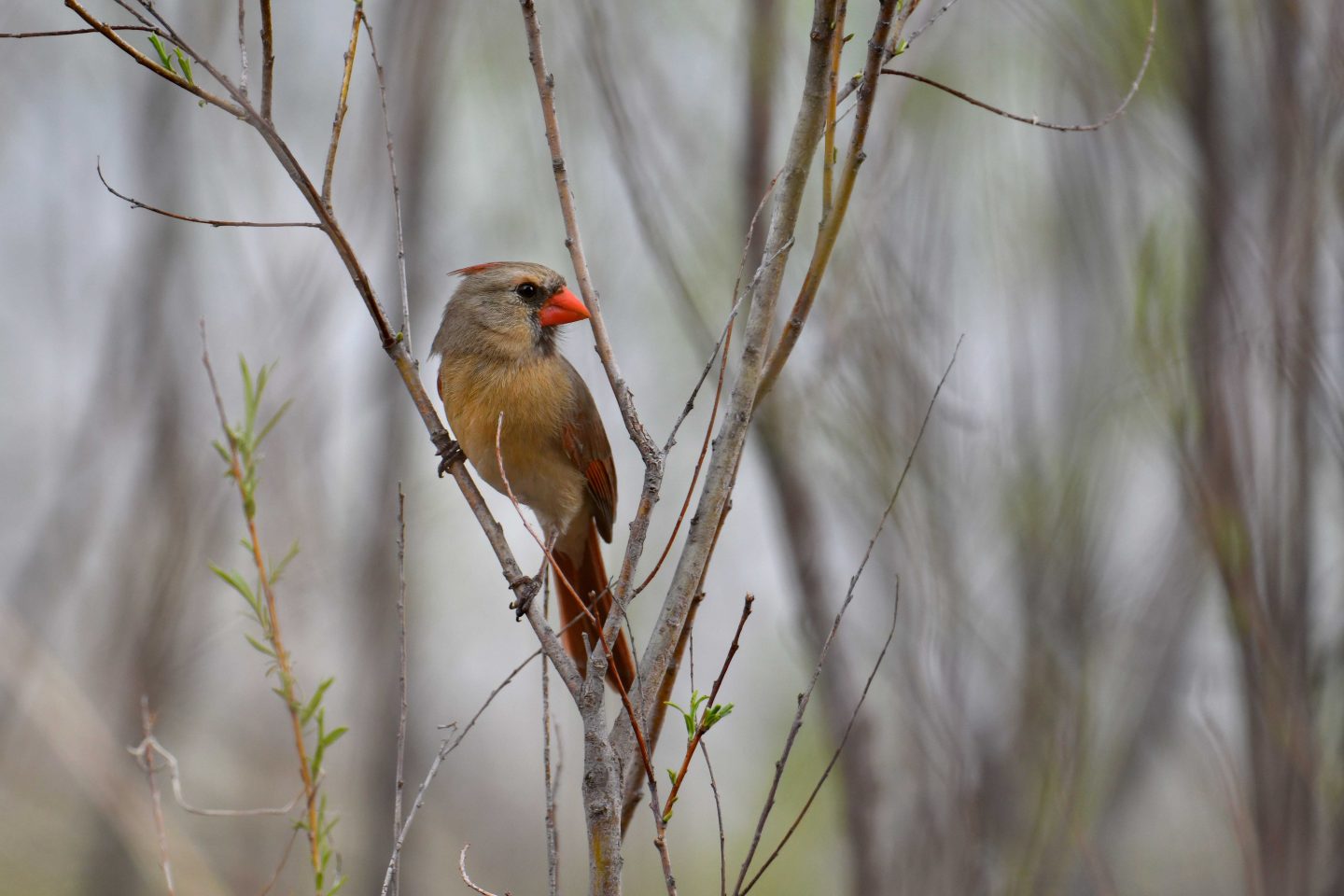
Dark-eyed Junco
Often affectionately called “snowbirds,” these sparrows make their way south to Nebraska each winter, where they brighten the chilly landscape with their presence. Their striking plumage — dark gray contrasted with crisp white — makes them easy to spot as they dart and hop along the ground, foraging for seeds. Whether skittering across the snow or hopping from one patch of dry grass to the next, they bring an unmistakable charm to the season.
To spot dark-eyed juncos, stroll through open, partially wooded areas with some understory for cover. Keep an eye on the ground and listen for their soft twittering call or trilling song.
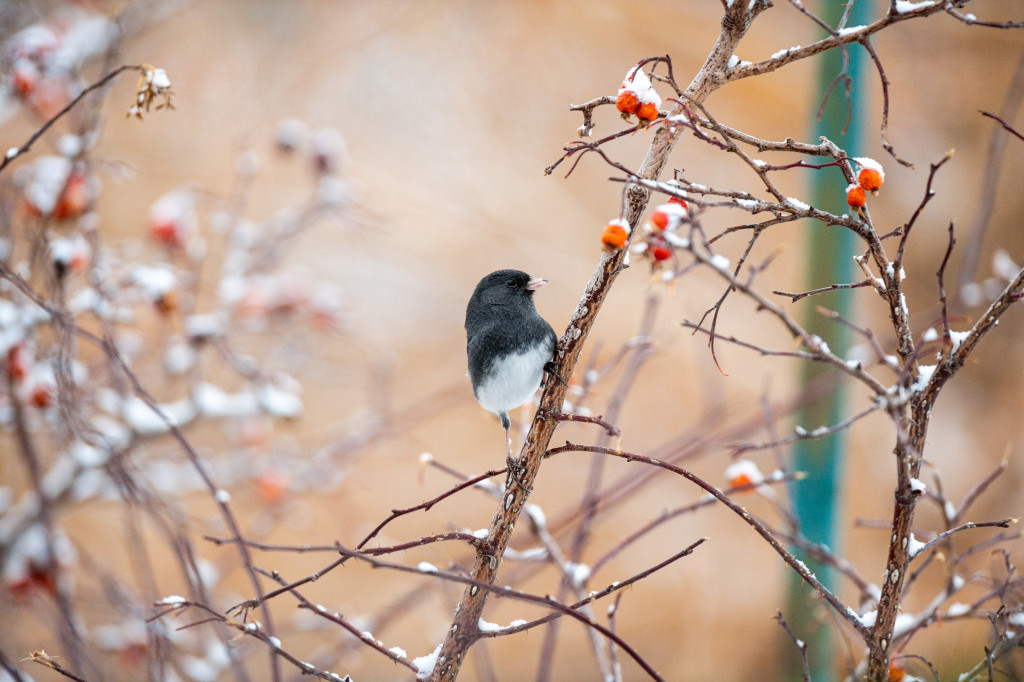
American Goldfinch
While the goldfinch’s brilliant yellow summer feathers fade to more muted tones of olive and beige in winter, they continue to be a lively and captivating addition to Nebraska’s birdscape. Goldfinches are known for their undulating flight patterns, darting and swooping with a graceful rhythm that makes them a joy to watch. Whether feeding on thistle, sunflower or other seeds, they approach their task with energetic focus, often hanging upside down to reach the best morsels.
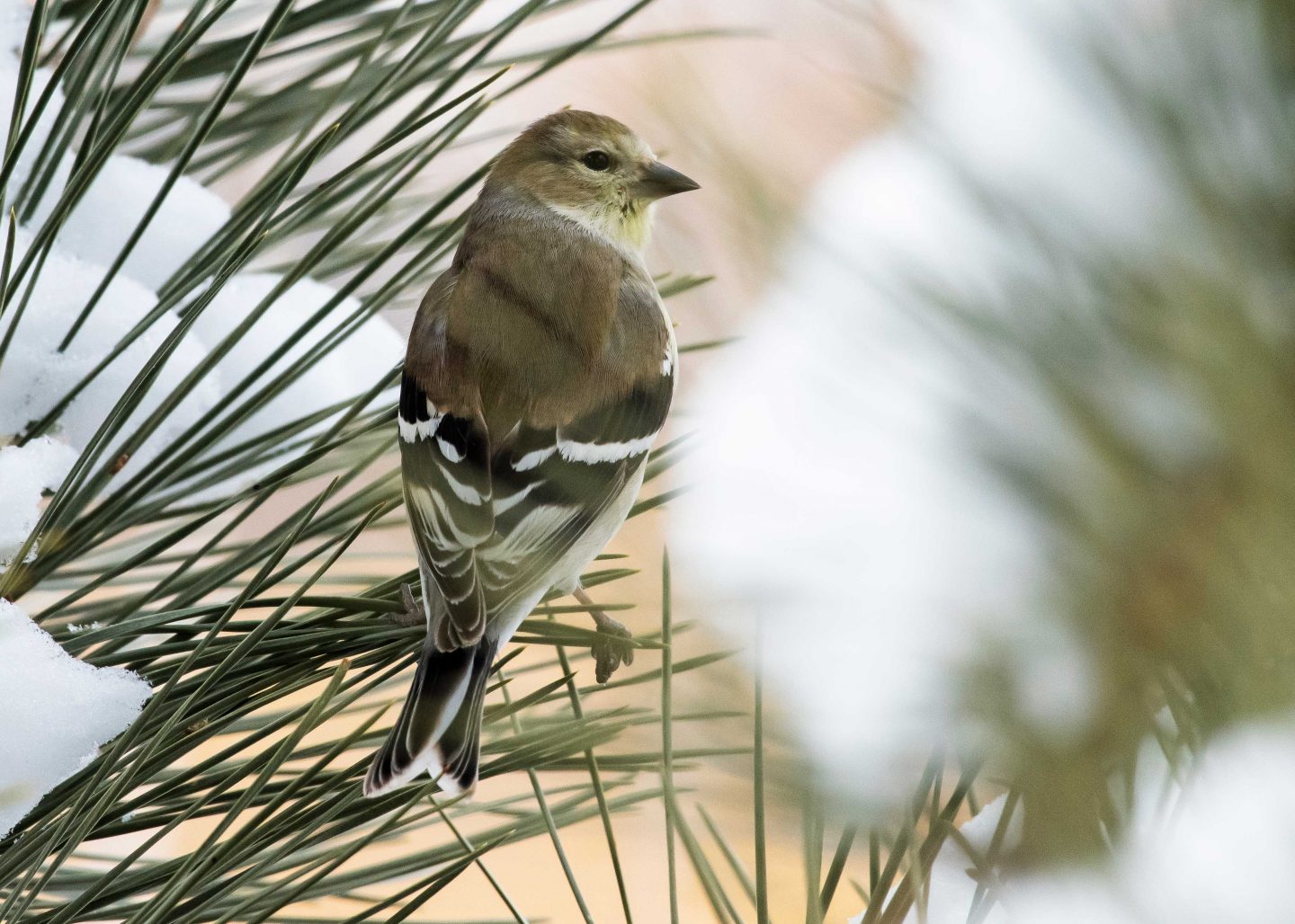
Woodpeckers
Winter is an excellent time to spot woodpeckers like the downy and red-bellied varieties, as these industrious birds are often active even in the coldest months. Known for their persistence and energy, woodpeckers can often be heard before they are seen, their rhythmic tapping creating a steady echo that resonates through the quiet winter woods. As they drum on tree trunks and branches, they’re searching for insects hiding beneath the bark—an essential food source during the colder months. This behavior not only provides sustenance for the birds but also plays an important role in forest ecology by helping to control insect populations.
The downy woodpecker, with its delicate, smaller size, and the red-bellied woodpecker, with its striking red belly and head, add a layer of activity and life to the otherwise still landscape.
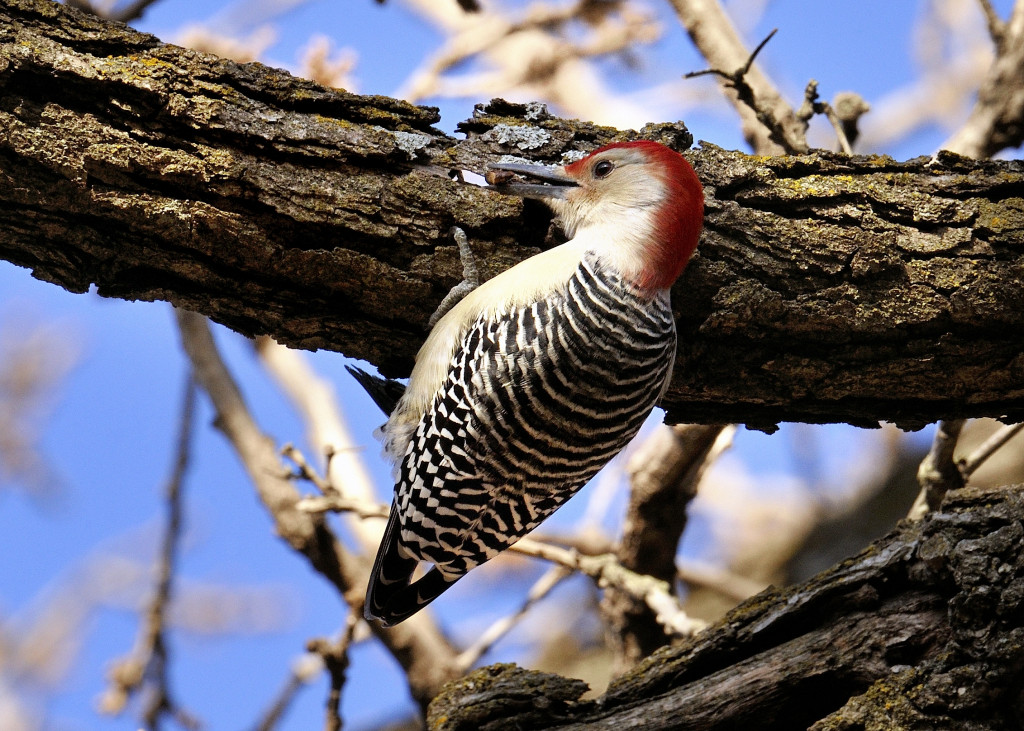
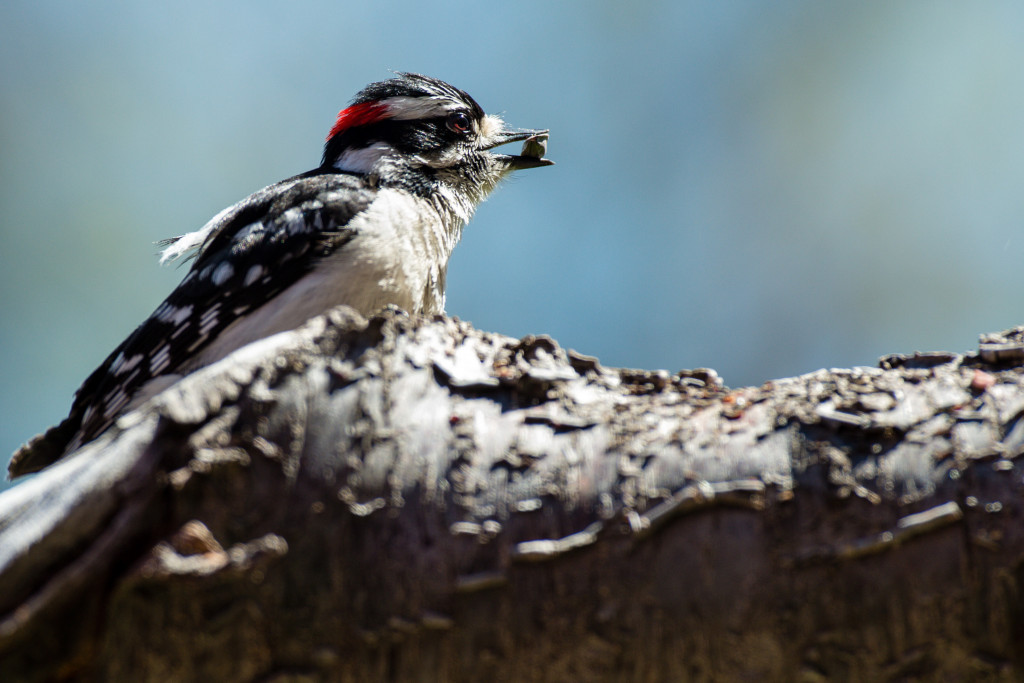
Cedar Waxwings
Cedar waxwings are one of Nebraska’s most elegant winter visitors, adding a touch of grace to the colder months. Known for their sleek, smooth plumage and distinctive black masks, these birds are often seen in small flocks flitting from tree to tree, particularly enjoying the berries of trees like cedars and hawthorns. Their glossy feathers, which range from soft browns and grays to flashes of yellow on their tails, seem to shimmer in the winter light.
Cedar waxwings are not just visually striking but are also known for their social nature, often feeding in groups and engaging in synchronized flight patterns that seem almost choreographed. They are also a delight to observe as they delicately pluck berries from branches with their sharp beaks, often consuming them in rapid succession.
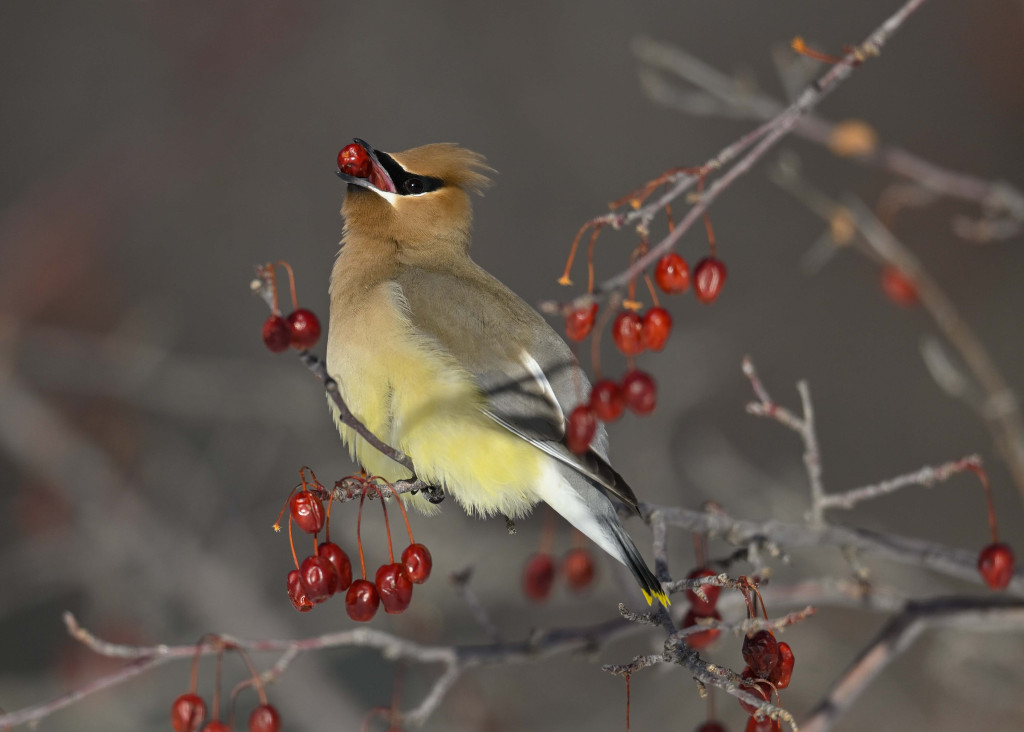
Bald Eagles
Majestic and powerful, bald eagles are one of the most awe-inspiring sights of Nebraska winters. These magnificent birds can be found gathering along rivers, reservoirs and other bodies of open water, where they take advantage of the fishing opportunities that winter’s freezing temperatures provide. Their sharp, keen eyesight allows them to spot prey from impressive distances, diving with precision to catch fish beneath the icy surface. Whether perched on tall trees, scanning the landscape or soaring high above with their broad wings outstretched, bald eagles offer a dramatic contrast against the stark winter sky.
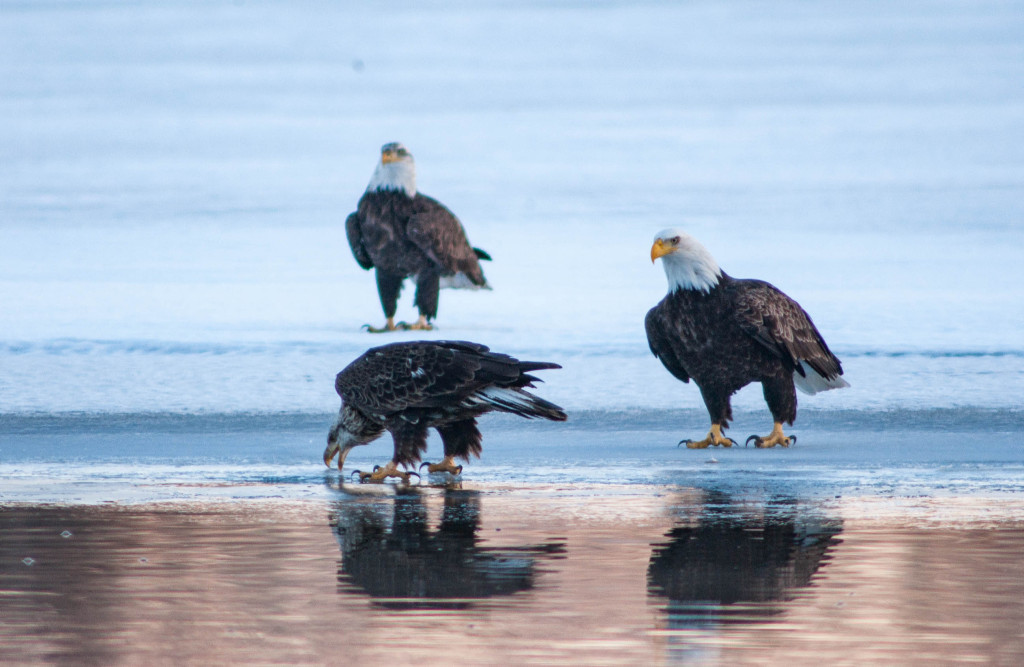
Discovering the Joy of Winter Birding
For many Nebraskans, winter birdwatching becomes a favorite pastime. The sight of a cardinal’s vibrant red feathers against a snowy backdrop or the cheerful chatter of chickadees can bring a sense of warmth and wonder to even the chilliest days. Birding is also an excellent way to connect with nature during a season when outdoor activities may feel limited.
Consider participating in community science initiatives like the Audubon Christmas Bird Count, an annual event that invites bird enthusiasts of all levels to survey local populations. Not only does this contribute valuable data to ornithologists, it’s also a fun way to explore Nebraska’s winter landscapes in new locations.
If new to birding, start by observing the birds in your own backyard, or locally at a state park, state recreation area or wildlife management area. A pair of binoculars, a field guide or a birding app, such as eBird or Merlin Bird ID by Cornell Lab, can help you identify species and learn more about their habits. Keeping a journal of your sightings can add another layer of enjoyment and deepen your appreciation for these resilient creatures.
This winter, take the time to look for these feathered jewels. Whether you’re gazing out your window or braving the cold for a hike, the vibrant colors, cheerful songs and lively antics of Nebraska’s winter birds are sure to bring joy and wonder to your days. So, grab a thermos of hot cocoa, put on your warmest coat and let the birds of Nebraska brighten your winter.
